As she completes the last round of her walk in Central Park, New York, on a cold windy day, Ruchira Gupta gears up for breakfast followed by a new painting, channelising her creative energy and passion for life.
Ruchira teaches in New York University and is also the founder-president of Apne Aap Women Worldwide (a grassroots movement to end sex trafficking). She is the first-ever Emmy winner from India for her path-breaking documentary The Selling of Innocents (News & Documentary Emmy Award for Outstanding Investigative Journalism in 1997). Her writing career began with The Telegraph, and after a number of years with The Sunday Observer, Business India magazine and the BBC, she reached the United Nations.
Her focus has always been on human trafficking, combating the menace, formulating policies, and developing action plans and laws against human trafficking. She has helped save, educate, establish several lives. Her amazing grit and drive, her achievements are all well documented.
But this story is about another Ruchira. Ruchira the artist. A Kolkata girl, who spends a major part of every year in this city and in Delhi, she ended up at her Forbesganj home in Bihar with her entire family locked in during the pandemic. But freedom is what she is made of, and within the confines of her garden, surrounded by her parents and siblings, she discovered nature and a new world, which evoked her creative instincts and she returned to a childhood hobby. She shared her paintings on Facebook, but soon got picked up for a virtual show, which can now be enjoyed online.
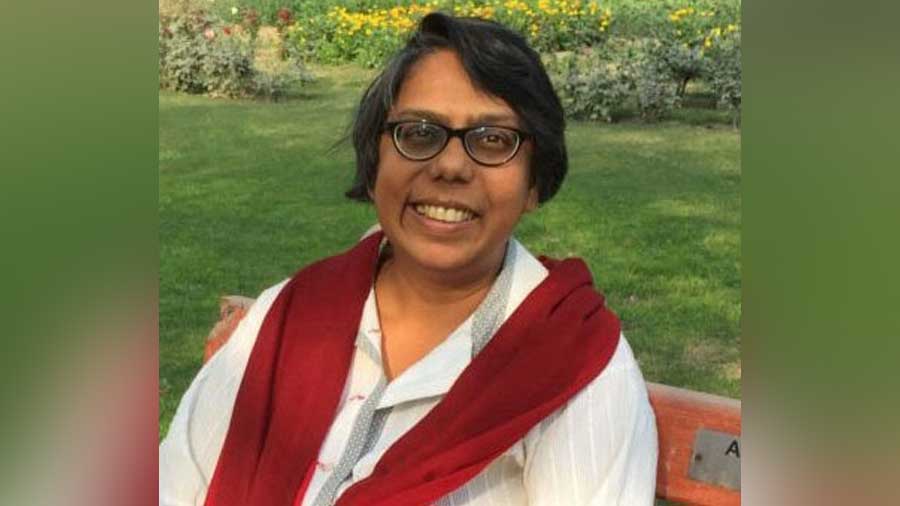
Within the confines of her garden, surrounded by her parents and siblings, Ruchira discovered nature and a new world, which evoked her creative instincts and she returned to a childhood hobby
Chatting with me on the phone, Ruchira opened up about how and why she started painting and how it has helped her survive the desolation of the pandemic. I, of course, see her always as a symbol of active hope.
Modhurima Sinha: Why did you start painting this series?
Ruchira Gupta: All my family returned to Forbesganj in the summer of 2020. Together, isolated for five months, we recovered from Covid in our centuries-old home, where I had spent my childhood holidays.
I had just been rallying with the Shaheen Bagh women in Delhi and distributing food to victims of sex-trafficking across the country. Livelihoods had vanished, trains had stopped, workers were hiking thousands of miles looking for food. My father was recovering from a heart attack. The life and land that I belonged to seemed to be slipping away.
But in the garden that my mother had planted half a century earlier, in every leaf, flower, and scampering squirrel, life burgeoned with energy. In the garden I re-connected to my own body and spirit.
I discovered my old school drawing book – along with six poster paints and two broken brushes – left untouched for 45 years. I began to paint. I wanted to capture a sense of re-awakening, of the possibility of life in defiance of disease, death, age and government.
My drawing book became a way of holding on to family and to life itself.
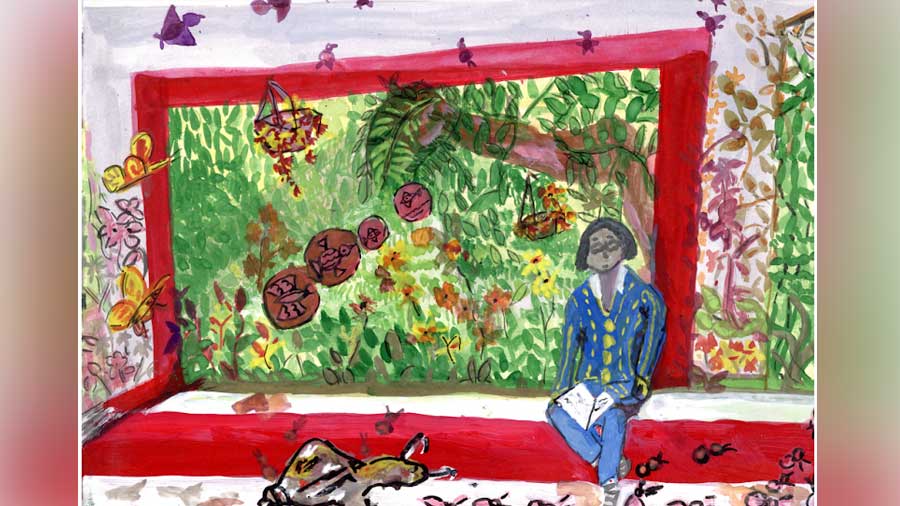
‘Self-portrait with ants and snails’, by Ruchira Gupta
When did you first start painting?
I used to paint and draw as a child till middle school, and then exams and careers took over. I have not touched a brush since then. That was more than four decades ago. I do remember winning a subscription to Shankar’s weekly, a children’s magazine, as a prize for a G.C. Laha art competition. I also remember drawing and coloring with two of my art teachers in Modern High School – Mrs Karuna Saha and Mrs Das. Mrs Saha was one of the first women artists to have her own studio and to travel to Italy for a painting residency. She and her husband, Shambhu Saha, were very close to Rabindranath Tagore. I was 10 or 12 years old when I was in her class.
There is a garden still on our earth for all of us
What inspired you this time?
I walked barefoot in the squelchy mud and let the big warm raindrops fall on my face and trickle down my neck and arms, down my skin to my toes in the garden in Forbesganj. I walked into the puddles after the rain and inhaled the smell of wet earth.
I began to see fragments of my childhood in familiar images – drying clothes on a wash line, trains stationed on the platform, lunch on stainless steel thalis, mangoes pickling in the sun, the beautiful harsingar flower scattered across the morning grass, banana leaves drooping with raindrops, squirrels scampering on the garden path, mosquito nets at bedtime… scents and colors of flowers blooming, that did not bloom in New York.
Forgotten objects resurfaced – old books, photographs, board games, furniture, clothes and blankets, rugs, old lace, bits of embroidery.…We dusted, cleaned, darned, scrubbed, polished and rekindled our memories.
My home cocooned me from the death, disease and hunger that stalked outside, and in cocooning me, it also came to life, leaving its neglected atmosphere of damp and dust behind.
As I saw the old abandoned house and garden come to life, I began to paint.
How did you turn the Covid situation into something positive for yourself and others?
My childhood home, my mother’s garden and my old drawing book helped me recover, after 45 years, a lost childhood that I never thought I would go back to. I now hold it in my paintings forever. It taught me that people and Nature can together rekindle life and make us whole again.
When artist Prabhakar Kamble contacted me to say he wanted to curate my show in a virtual online exhibition, I wrote a story-narrative to accompany the art. I share my paintings with everyone, in these very dark times, with the conviction that there is a garden still on our earth for all of us.

‘Monsoon House’
There is definitely an influence of Tagore…
Did you have paint, etc, at home?
I had six poster paints, two unfinished drawing books and two brushes, one of which was broken. I didn’t even have pencils and erasers. It was locked down, so it was many months later that my niece sent some more brushes and paints.
Is this your style from back in school or is it a new one?
My style is intuitive. I am taught by everything I have seen over the years and poetry I have read. There is definitely an influence of Tagore, maybe not in style, but in that I see no hierarchy between animals, flowers and humans.
There is definitely the influence of the Hindi writer Phanishwar Nath Renu in the way I look at Forbesganj and its people. I learned to observe people who were invisible to most, because of the stories he and my socialist father and uncles shared.
I go to museums and galleries all the time. Art is like food for the soul.
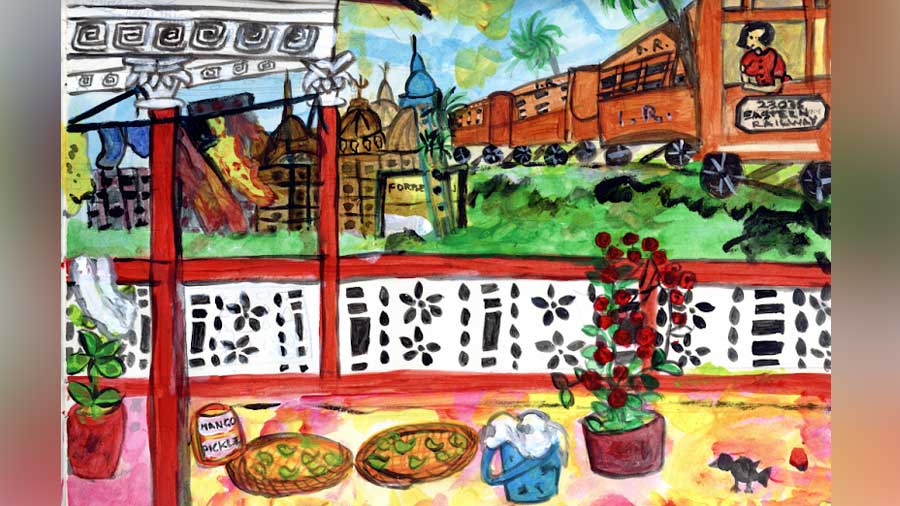
‘Terrace and Trains’
An outsider to the art world, I persevere in art and politics
Will you continue to paint now?
Yes. I have not stopped painting since. I spent all of 2020 in India and all of 2021 in New York. I saw New York slowly recover, shops opened, streets came to life, children began to go school, office-goers boarded buses, saxophonists began to play jazz near subway stops… and I began to paint sitting in cafes, gazing out into the world, into a horizon that was opening again.
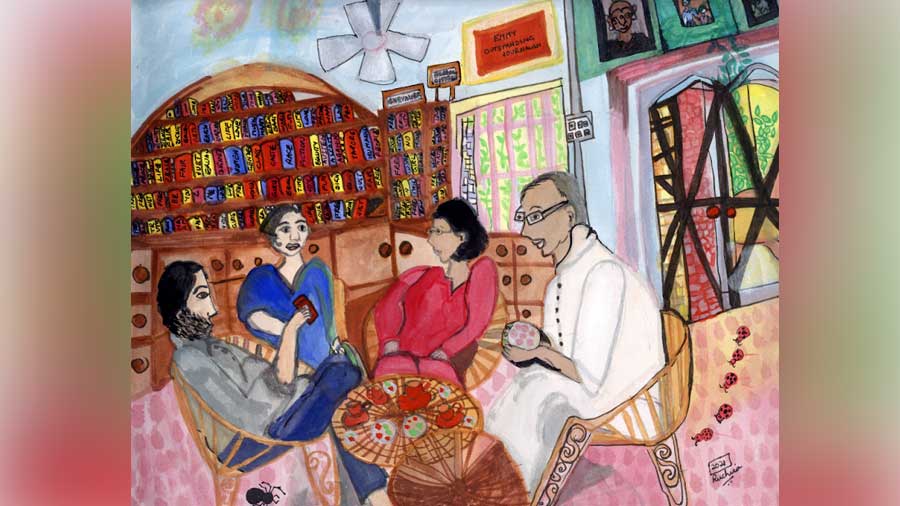
‘Tea Time’
How would you describe yourself as an artist?
I am self-taught, in a way an outsider to the art world. I persevere in art and politics with the absolute belief that if the heart is moved, so might the mind move towards positive activities for justice and freedom.
I would call myself a feminist storyteller, who wants to paint hope.
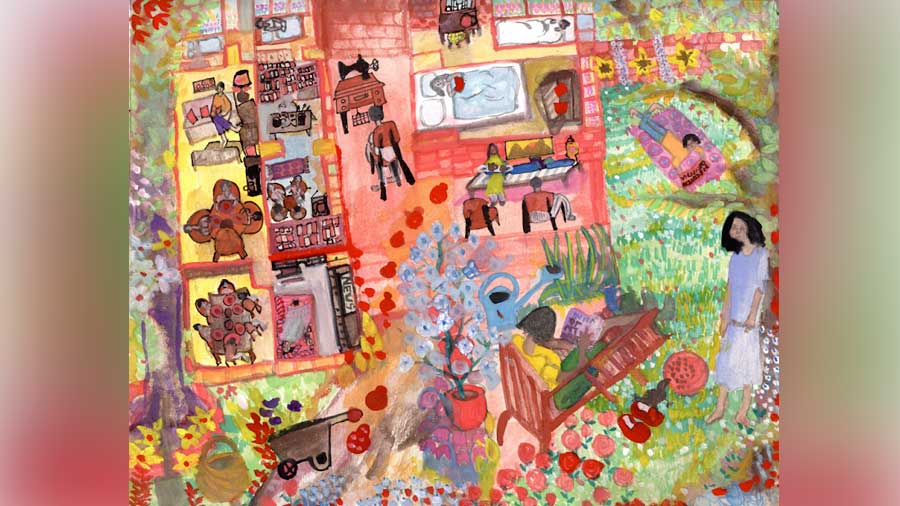
‘Inside Outside’
